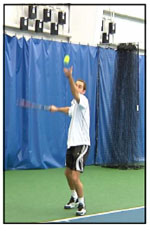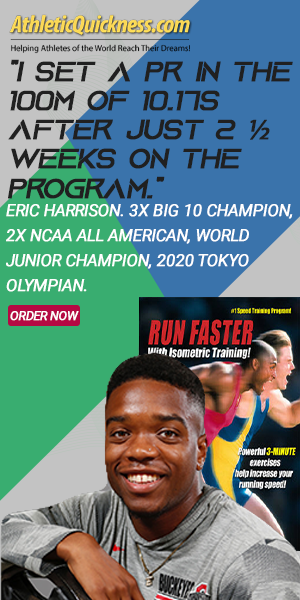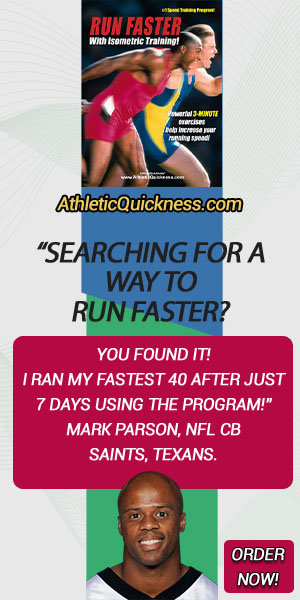Developing Speed and Power in the Tennis Serve
Serve With More Speed and Power by Knowing the Mechanics of the Serve and Which Muscles To Condition
Part 1 – The Stance & Back Swing
Part 2 – The Forward Swing
Part 3 – The Follow Through
Tennis Speed – Best Exercises for Racket Speed & Court Quickness
Part 1 of 3 – The Stance & Back Swing
The Tennis Serve consists of three main phases: 1) the backswing, 2) the forward swing and 3) the follow through.
Each phase will be broken down for the right-hand player and the most important muscles contributing to each phase will be identified. However, before any of these phases are performed, getting into the proper stance is required.
Therefore, let’s first identify the basic stance position for the tennis player.
Stance
The front foot is directly behind the baseline angled diagonally into the court. The back foot is near parallel to the baseline and is situated behind the front foot. Both feet are about shoulder width apart, and the majority of the weight is on the front foot with the back foot used mainly for balance.
The racket is pointing directly at the net and the ball is held against the throat of the racket. This is the basic stance position and is seen in Figure 1-7a.
Backswing
The backswing transitions us from the stance position seen in Figure 1-7a to the trophy pose position seen in Figure 1-7d.
During this transition, three noticeable movements take place at the same time:
- motion of the tossing arm
- motion of the racket arm
- transfer of weight between the feet
1) Motion of the Tossing Arm
Generally speaking, both arms drop together (Figure 1- 7b) and then rise up together (Figure 1-7d).
Focusing on the tossing arm, the muscles that allow for this upward movement in Figure 1-7c are the Coracobrachialis, Biceps Brachii, Anterior Deltoid and Pectoralis Major.
2) Motion of the Racket Arm
From the stance position in Figure 1-7a, the racket arm drops down and is then abducted out to the side of the body with the palm of the hand facing downward (Figure 1-7c). The primary muscle responsible for abducting the racket arm out to the side is the Middle Deltoid.
Now if we continue on with the motion of the racket arm, we end up in a position called the “L” position (Figure 1-7d) because the racket arm and forearm end up making the shape of the letter “L” and this position is necessary to allow you to swing the racket correctly later on in the serve.
The muscles that help get your racket arm into this position are collectively known as the external shoulder rotators and their names are the Teres Minor and the Infraspinatus muscles.
3) Transfer of Weight Between Feet
The other noticeable movement that occurs in going from the stance position to the trophy pose position is the transfer of weight that occurs between your feet. Beginning in the stance position in Figure 1-7a, the majority of weight starts out on the front foot and the back foot is used mainly for balance. Figure 1-7a shows this with the front foot flat on the ground and the heels of the back foot slightly elevated.
Balancing in this position is a function of the hip stabilizer muscles on the left side of the body. From there, your weight rocks back on to your back foot and then the toes of your front foot come up off the ground (Figure 1-7b).
Your weight then rocks back forward (Figure 1-7c) and while this is happening, both knees start to bend – a function of the Quadriceps muscles.
The heels of your feet also start to rise up off the ground – a function of the Ankle Plantar-flexors.
As you continue to rock forward, your back foot is brought inward, or adducted by the Adductor muscles, toward your front foot and you end up in the trophy pose position signifying the end of the backswing (Figure 1-7d).
Here, the knees are bent, ankles are plantar-flexed, racket arm is in the “L” position and the tossing arm is pointing up.




Always glad to help!
Dr. Larry Van Such
Part 1 – The Stance & Back Swing
Part 2 – The Forward Swing
Part 3 – The Follow Through
Tennis Speed – Best Exercises for Racket Speed & Court Quickness






